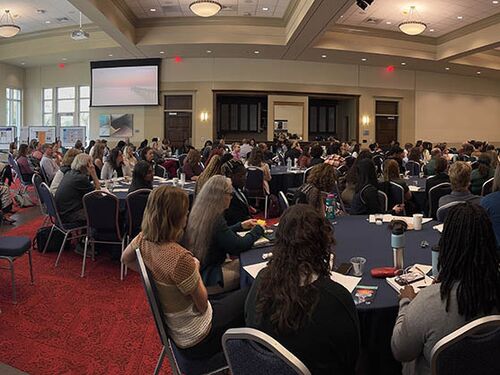Designing Learning Experiences with Attention to Students' Backgrounds Can Attract Underrepresented Groups to Computing
News Release
By Megan Lowry
Last update January 11, 2021
WASHINGTON — Learning experiences in computing that are designed with attention to K-12 students’ interests, identities, and backgrounds may attract underrepresented groups to computing better than learning experiences that mimic current professional computing practices and culture do, says a new report from the National Academies of Sciences, Engineering, and Medicine.
The lack of diversity in the computing workforce and learning programs is well documented, and women and minorities remain underrepresented in both. The report explores how authentic experiences — learning activities that both reflect professional practice and connect learners to real-world problems — can engage youth in computing and develop their interest in pursuing it further. But because the professional world of computing lacks diversity, learning that is designed to closely mirror current professional practice may be unattractive to students from communities that have typically been excluded from the industry, the report says.
Cultivating Interest and Competencies in Computing: Authentic Experiences and Design Factors recommends learning experiences be designed for both professional and personal authenticity. For example, the report points to a Seattle Public Library program, TechTalks, which encourages students to tell a story about their lives or their families using Scratch (a free programming language) and robotics. One student used computing to tell the story of their adoption, while another recounted racing goats on a family reunion trip to Ethiopia.
“If we want all learners to be given the chance to engage with computing and possibly develop that interest into a career, we have to connect with students’ identities and meet them where they are,” said Barbara Means, executive director of learning sciences research at Digital Promise, and chair of the committee that wrote the report. “Our report recommends strategies that instructors and computing experience designers can use to bring more underrepresented students into the fold.”
Program designers should consider whether their program outreach is inviting for underrepresented groups, allow learners to choose activities that interest them, and provide inclusive access either through integration with the core school curriculum or in their location and scheduling outside of school time. The report encourages funders to cultivate a network of opportunities, both in and out of school, in which students can engage with computing.
The report finds that many learners will need multiple experiences with computing in order to develop enduring interest. Social interactions that take place and relationships that develop during learning activities can be important drivers for continued participation.
The study — undertaken by the Committee on the Role of Authentic STEM Learning Experiences in Developing Interest and Competencies for Computing — was sponsored by Google and the Grable Foundation. The National Academies of Sciences, Engineering, and Medicine are private, nonprofit institutions that provide independent, objective analysis and advice to the nation to solve complex problems and inform public policy decisions related to science, technology, and medicine. They operate under an 1863 congressional charter to the National Academy of Sciences, signed by President Lincoln.
Contact:
Megan Lowry, Media Officer
Office of News and Public Information
202-334-2138; e-mail news@nas.edu
Featured Publication
Consensus
·2021
Computing in some form touches nearly every aspect of day to day life and is reflected in the ubiquitous use of cell phones, the expansion of automation into many industries, and the vast amounts of data that are routinely gathered about people's health, education, and buying habits. Computing is no...
View details


